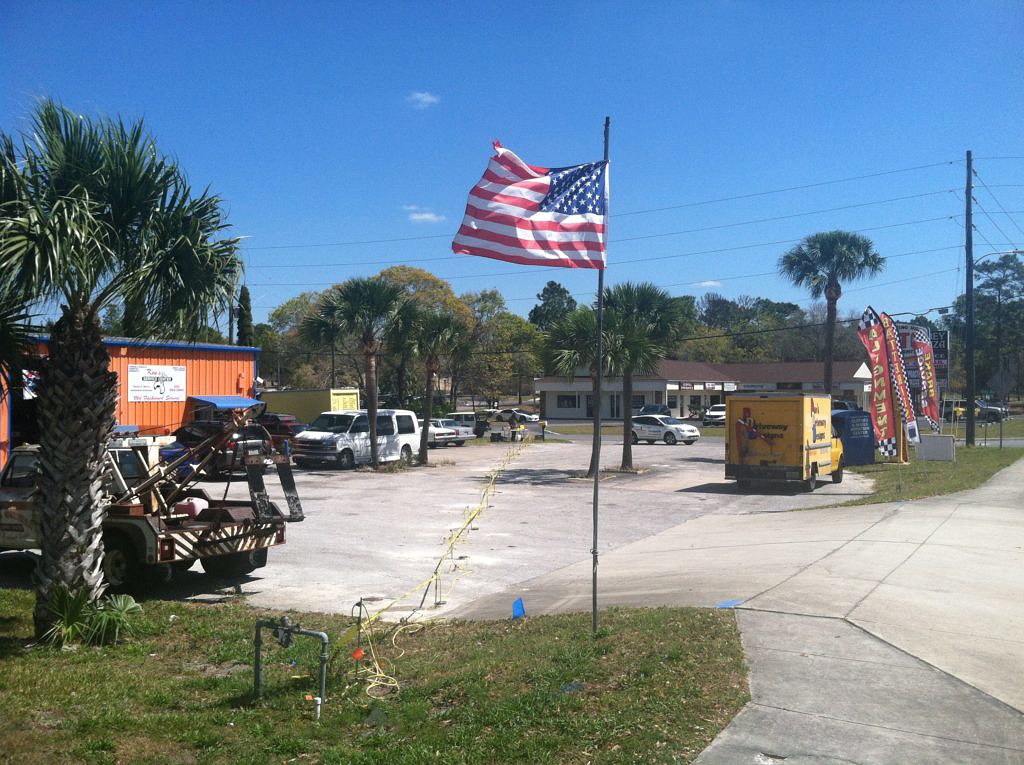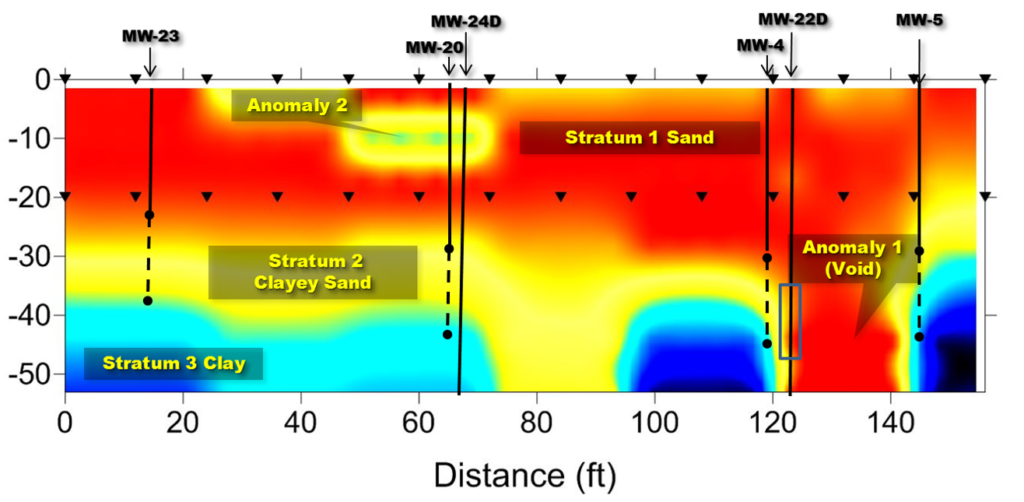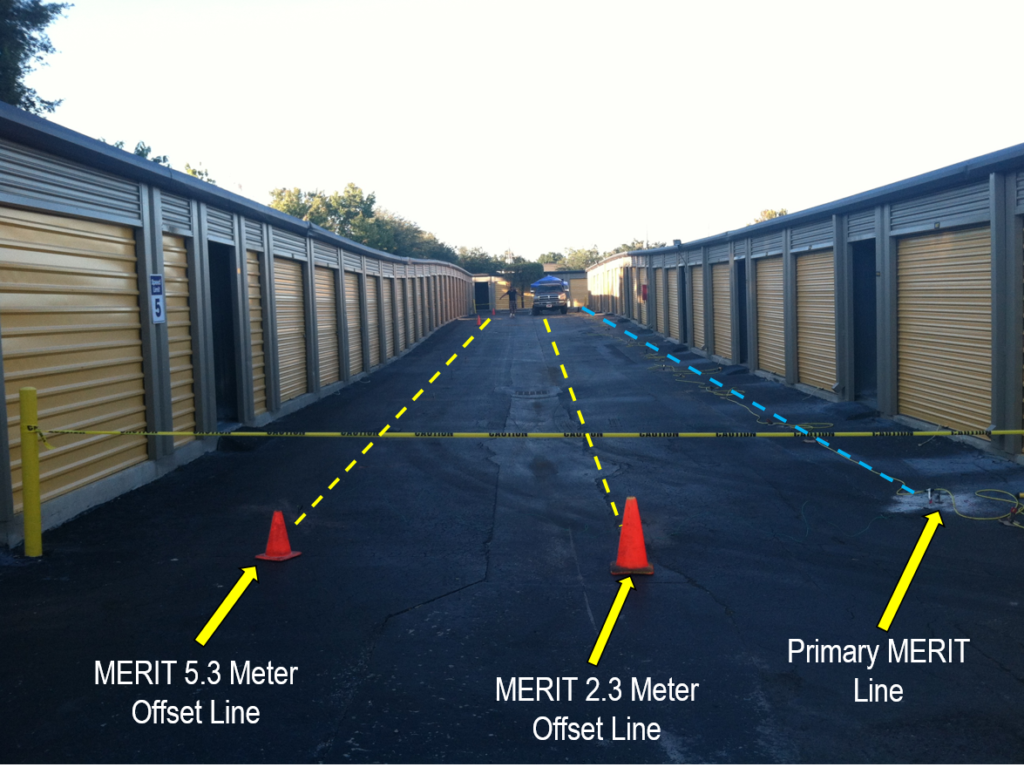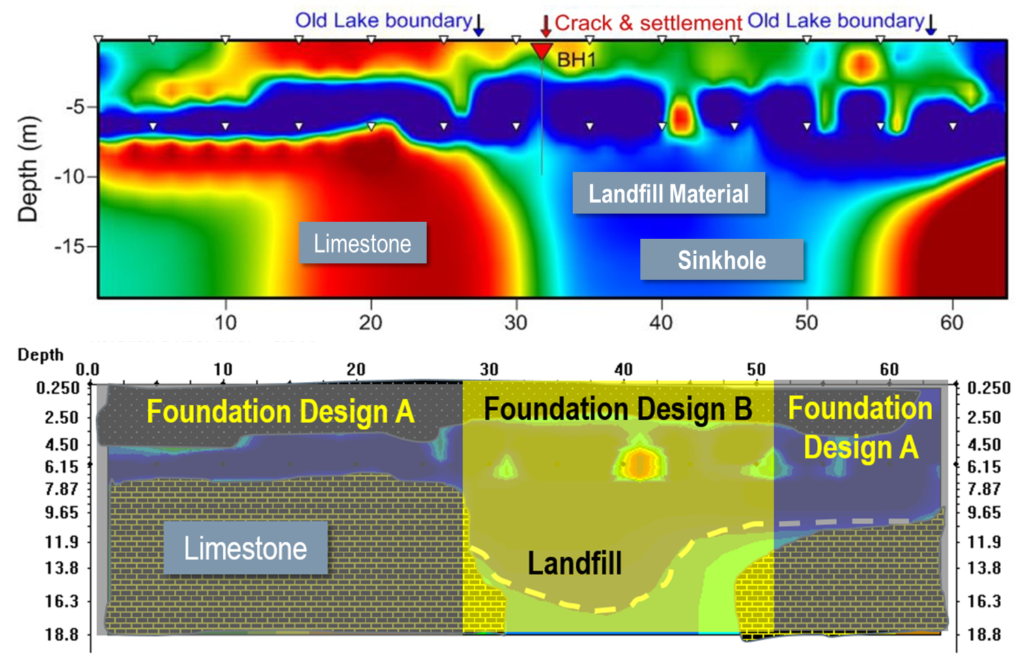Better Science, Better Results: Environmental Case Studies
MERIT is proven to reduce costs and remediation time associated with subsurface void, soil type, and groundwater issues. We have a solid track record of providing our clients with better science and better results than what’s commonly available in geologic industries today. Our clients consistently use MERIT data to drive down costs and time associated with investigating and remediating their sites.
MERIT Locates Deep Sinkhole at Former Gas Station

Problem: A potential sinkhole was identified at a former gas station, prompting concerns about groundwater contamination.
Results: MERIT identified a potential relic sinkhole at approximate stations 75 to 95 feet and potential raveling zone from stations 120 to 140 feet, achieving significantly higher resolution at depth than what can be achieved with surface electrical resistivity. The survey provided geometry of the Stratum 1 layer, in particular an infilled depression area related to potential active sinkhole; an understanding of distribution of Stratum 2 soils deposited that filled in the relic sinkhole, and geometry/distribution of the Stratum 3 or pinnacle karst.
Outcome: MERIT results saved the client time and resources on exploration drilling and remediation.

MERIT Identifies Environmental Threat to Groundwater

Problem: Large amounts of differential settlement were observed at an industrial property constructed over a former landfill. Due to the presence of an on-going landfill gas removal system, there were concerns that drilling/soil testing would penetrate confining units of the landfill and possibly of release contaminates.
Results: The MERIT survey was superior to the surface methods, revealing the existence of deep depression along the profile of the east building. This feature is considerable in size (22.5 x 18.8m deep) and was unable to be imaged by ground penetrating radar or surface electrical resistivity.
Outcome: MERIT enabled the foundation design to be roughly 60% smaller than it would have been if investigated using standard geotechnical techniques.

